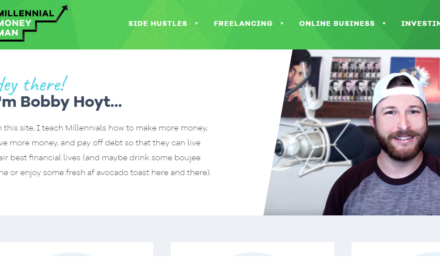Did you ever watch the launch of a space rocket?
In the first few moments, it moves slowly (or so it appears). These are dreadful moments. Most fatal threats hide in the takeoff and landing phases. But gradually, speed increases. After the rocket finally unshackles itself from gravity’s chains, it’s smooth sailing (more or less).
Launching a content business is like that. The takeoff phase takes months (17 months on average to support one person, according to The Tilt research) or sometimes years. The audience grows at a snail’s pace. It can feel deflating compared to the explosive success of your content entrepreneur heroes.
But to give your content business a quicker boost, you have an ethical shortcut to accelerate early growth – adopt a community marketing strategy and invest your time in communities where your audience lives and discusses topics related to your content tilt.
The strategy is simple but not easy:
- Find and join communities related to your topics.
- Be helpful.
- Build authority and trust within those communities.
- Turn authority and trust into visits, subscriptions, and sales.
Now, let’s dive in.
See the benefits of a community marketing strategy
It should be obvious, but here’s a disclaimer: Using communities as a marketing strategy for your content business does NOT mean joining other communities and posting all your links and publishing calls to action (CTA) related to your business. This marketing opportunity is a content marketing opportunity – where you provide valuable and relevant content for the audience. As you read above, you must be helpful.
The first benefit of this approach is building good relationships. You may find fans, clients, collaborators, and business partners. Often those online relationships can expand to your online properties as well as real-life interactions.
Another benefit is amplification for your content. When you post to your social media platforms or your website early on, you have to rely on their algorithms to surface your content to potential audiences. This is largely out of your control. Getting involved in other communities gives you a stage to share your best (and most relevant) content and likely get some early, engaged views.
But getting involved in communities isn’t just about promoting your content. It’s also about showing yourself as a person. Fellow community members want to get to know you – to trust you (and your content.) Sooner or later, they may inquire about your services or products. In online communities, word of mouth works almost as well as it does in real life. People will appreciate your help and recommend your content, products, and services to friends outside the community.
By joining communities, you can find future fans, business partners, and collaborators. Plus, you get another stage to share your best content relevant to that community, says @MrCabasVidani. #ContentEntrepreneur Click To TweetYou also get a bonus benefit – actively interacting with an engaged audience can provide new content ideas. Every question asked by a community member could be turned into valuable and relevant content.
Caveat: Make sure to read the community guidelines. They may detail whether you can mention products or affiliate details. If they do allow, promote your products minimally. You don’t want community members to see your name and think, “Oh, I wonder what they’re selling this time.”
Understand the options in a community marketing strategy
To find the right community, you must first know what to look for, right? Here are the main types of communities you can join.
Informal, open communities
When you hear the word “community,” you may think of a formal structure like Facebook or LinkedIn groups. You can find informal communities that still enable powerful connections. They revolve around a thought leader or influencer (individual handle) or a topic (usually a hashtag).
For example, a while ago, I started replying to Twitter posts by Mark Manson, adviser of life and uncomfortable truths. I added my insights to “borrow” some attention from Mark’s audience. I was not alone. His followers replied to each other and brought the conversation to our personal profiles.
Hashtags can still work on Twitter, too. For example, if you are documenting your journey, add the #BuildInPublic hashtag. You’ll often attract replies and likes from strangers who are building in public.
Closed communities
These more traditional communities involve a virtual space where members gather. A user profile or some other form of registration is required to access them. The best way to find relevant communities is to search for your topics on the main platforms:
- Facebook groups (but their popularity is declining),
- Telegram
- Discord (Join me and others in The Tilt community here.)
- Circle.so
- Twitter communities (a recently added new tab).
If the group isn’t publicly visible, the best approach is to look for thought leaders in your space and see if they offer some restricted gathering space for their followers.
Paid communities
More and more content entrepreneurs offer a closed, paid community. It can be a smart monetization strategy as it brings recurring revenue and more active or intense engagement.
In deciding which paid communities to join, evaluate how each operates. Sometimes members are there only to talk to the founder, so peer-to-peer interaction is rare or ineffective.
Before joining a paid community, see if its members interact with each other. If they just want to talk to the founder, it won't work as a community marketing strategy, says @MrCabasVidani. Click To TweetCohort-based course communities can be more powerful. Students operate as a class team for a limited time and go through demanding challenges together. This is one of the best ways to develop strong bonds. For example, Ship 30 for 30 is a course for beginner writers. It’s gained almost cult-like popularity on Twitter, where former students recount their shared experiences long after the 30 days of the course.
Build authority inside communities
You have limited time to interact inside communities. Thus, you should pick no more than two that deliver the biggest value to you and your content business. How do you do that? Evaluate the quantity and quality of existing discussions:
- Do they tackle aspects of your topics that are relevant to you?
- How active is the community? Are there multiple posts per day? Once a day? Once a week?
- Do discussions quickly end, or do they last for days?
- Can you help or contribute to the community?
- Are there people you’d like to spend time with?
Start engaging
You need at least a month of regular interactions to understand whether a community can work for you. Not just whether it can bring you traffic, subscribers, and sales, but also if you like spending time in it. If you don’t, it will become a chore. Other members will notice, and your strategy won’t work.
How do you engage? You’re a creator. You know what to do.
On your channels, you usually publish content based on your ideas and research. In a community, you share your ideas in replies to other people’s questions. Or you publish your insights based on shared interests and problems.
To maximize your presence in the community:
- Complete your profile with your primary URL or possibly a lead magnet.
- Scroll through questions every day and generously answer the most relevant ones.
- Share your difficulties and quirks. Let people know you are human.
- Promote your content business only when and where you are allowed (many communities have sections, threads, or events dedicated to member self-promotion.)
Re-evaluate
After a month – and regularly thereafter – evaluate if your participation is bringing the expected results in your community marketing strategy and if you are having fun. Communities can change. You change, too. Don’t be afraid to sail for better land.
Level up your relationship
Sometimes things go really well. Your engagement increases, and you become friends with fellow members. You could level up your role to a moderator if the community’s admins need help, raising your profile among the members. Or you could offer your expertise in a more official setting, such as hosting a webinar for the group. (If you do, don’t forget to include a CTA in it, even if it’s just a request to subscribe to your newsletter.)
Your next step
I find this community marketing strategy approach satisfying. It’s challenging but more human than endlessly trying to please the algorithms with your content (which we must still keep doing) to grow your business more quickly.
You just need to do the initial research and then set aside 15 to 30 minutes each day to engage in giving your business a much-needed rocket boost.
Try it and let me know how it goes. You can DM me on Twitter!
About the author
Alberto has been a content entrepreneur since 2010, writing posts, producing videos and podcasts, and selling ebooks, courses, and services. Now he helps content creators become consistent through coaching at https://www.coach.me/albertocabasvidani.










